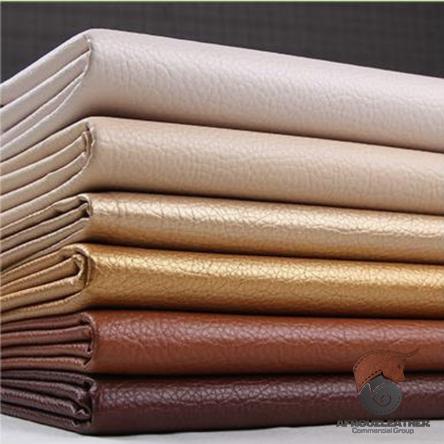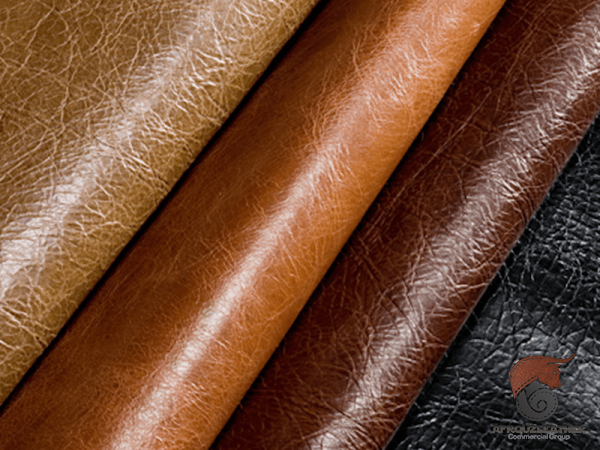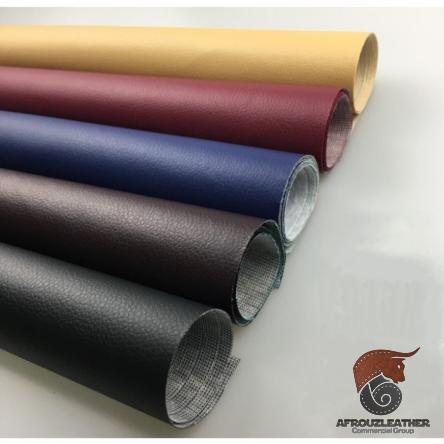Leather suede fabric exudes elegance and sophistication and has become an integral component of various industries, including fashion, interior design, and upholstery. This unique material possesses a distinctive texture and is highly sought after for its versatility, durability, and luxurious appeal. In this guide, we explore the characteristics, manufacturing process, applications, and considerations involved when purchasing leather suede fabric for sale. 1. Understanding Leather Suede Fabric: Leather suede fabric is a type of leather that has been processed to create a soft, fuzzy surface. Unlike full-grain or corrected grain leather, which have a smooth and polished appearance, suede leather retains the fibers on the inner side of the hide, resulting in a softer and more textured feel. Suede is typically made from different animal hides, with lamb and goat being the most common choices due to their fine, tighter grain. 2. Manufacturing Process: To produce leather suede fabric, manufacturers follow a meticulous process involving multiple steps: a. Splitting: The hides are initially split into thinner layers, with the top grain layer used for full-grain or top-grain leather.
leather
 The inner split is used for suede production. b. Finishing: The split leather is then sanded or buffed to create a consistent thickness and remove any imperfections. This process leaves the surface with a velvety texture. c. Nap Creation: Next, the leather is brushed or rubbed with abrasive materials to raise the fibers and create the characteristic fuzzy nap. Depending on the desired finish, different brushing techniques are employed. d. Dyeing or Coloring: Leather suede fabric can be colored using various techniques, such as aniline dyeing, pigment dyeing, or the application of surface finishes. These processes enhance the appearance and durability of the fabric. 3. Characteristics of Leather Suede Fabric: Leather suede fabric boasts numerous distinguishing features, including: a. Softness and Texture: The velvety texture of suede is what sets it apart from other leather types. It feels incredibly soft and delicate to the touch, making it extremely comfortable to wear or use in interior design. b. Breathability: Suede leather is highly breathable, allowing for the circulation of air, which helps regulate temperature and provides comfort even in warmer climates. c. Durability: While suede is generally not as durable as full-grain leather, it still maintains excellent strength and resilience. Proper care and maintenance can significantly prolong its lifespan. d. Aesthetics: Leather suede fabric possesses an inherent aesthetic appeal, creating a distinct and luxurious appearance in various applications.
The inner split is used for suede production. b. Finishing: The split leather is then sanded or buffed to create a consistent thickness and remove any imperfections. This process leaves the surface with a velvety texture. c. Nap Creation: Next, the leather is brushed or rubbed with abrasive materials to raise the fibers and create the characteristic fuzzy nap. Depending on the desired finish, different brushing techniques are employed. d. Dyeing or Coloring: Leather suede fabric can be colored using various techniques, such as aniline dyeing, pigment dyeing, or the application of surface finishes. These processes enhance the appearance and durability of the fabric. 3. Characteristics of Leather Suede Fabric: Leather suede fabric boasts numerous distinguishing features, including: a. Softness and Texture: The velvety texture of suede is what sets it apart from other leather types. It feels incredibly soft and delicate to the touch, making it extremely comfortable to wear or use in interior design. b. Breathability: Suede leather is highly breathable, allowing for the circulation of air, which helps regulate temperature and provides comfort even in warmer climates. c. Durability: While suede is generally not as durable as full-grain leather, it still maintains excellent strength and resilience. Proper care and maintenance can significantly prolong its lifespan. d. Aesthetics: Leather suede fabric possesses an inherent aesthetic appeal, creating a distinct and luxurious appearance in various applications.
Specifications of leather
 4. Applications of Leather Suede Fabric: The versatility of leather suede fabric makes it suitable for a wide range of applications across different industries: a. Fashion and Accessories: Suede is commonly used in the fashion industry for crafting garments like jackets, skirts, vests, and shoes. It is also a popular choice for creating accessories such as bags, belts, gloves, and hats. b. Furniture Upholstery: Suede is highly sought after for upholstering furniture and adding a touch of luxury to interiors. From sofas and chairs to headboards and ottomans, suede fabric can transform any piece of furniture into an elegant focal point. c. Automotive Industry: The automotive industry frequently utilizes suede fabric for car interiors, particularly for seats, steering wheels, and dashboards. Its softness and durability make it an ideal choice for enhancing driving comfort. d. Interior Design: In interior design, suede fabric can be used for draperies, wall coverings, cushions, and bedding. It adds a sense of sophistication and warmth to any space. e. Bookbinding and Stationery: Suede leather is often utilized in bookbinding and stationery, adding a touch of refined elegance and luxury to journals, book covers, and writing cases. 5. Factors to Consider When Purchasing Leather Suede Fabric: When looking for leather suede fabric for sale, several crucial factors deserve consideration: a. Quality: Assess the overall quality of the suede, considering factors such as softness, durability, and color vibrancy. Look for materials that are free of defects and have a consistent nap.
4. Applications of Leather Suede Fabric: The versatility of leather suede fabric makes it suitable for a wide range of applications across different industries: a. Fashion and Accessories: Suede is commonly used in the fashion industry for crafting garments like jackets, skirts, vests, and shoes. It is also a popular choice for creating accessories such as bags, belts, gloves, and hats. b. Furniture Upholstery: Suede is highly sought after for upholstering furniture and adding a touch of luxury to interiors. From sofas and chairs to headboards and ottomans, suede fabric can transform any piece of furniture into an elegant focal point. c. Automotive Industry: The automotive industry frequently utilizes suede fabric for car interiors, particularly for seats, steering wheels, and dashboards. Its softness and durability make it an ideal choice for enhancing driving comfort. d. Interior Design: In interior design, suede fabric can be used for draperies, wall coverings, cushions, and bedding. It adds a sense of sophistication and warmth to any space. e. Bookbinding and Stationery: Suede leather is often utilized in bookbinding and stationery, adding a touch of refined elegance and luxury to journals, book covers, and writing cases. 5. Factors to Consider When Purchasing Leather Suede Fabric: When looking for leather suede fabric for sale, several crucial factors deserve consideration: a. Quality: Assess the overall quality of the suede, considering factors such as softness, durability, and color vibrancy. Look for materials that are free of defects and have a consistent nap.
buy leather
 b. Thickness: Suede fabric comes in various thicknesses, which can impact its durability and application suitability. Thicker suede is generally more durable, while thinner suede may be ideal for lightweight garments. c. Color Options: Leather suede fabric offers a wide range of color options, allowing you to choose hues that complement your desired application. Consider the colorfastness of the fabric, ensuring it does not bleed or fade easily. d. Maintenance: It is essential to understand the specific care instructions for suede fabric, as improper maintenance can lead to damage and diminish its lifespan. Some suede fabrics may require professional cleaning or specialized treatment. e. Price and Availability: Consider your budget and availability when purchasing suede fabric. Genuine suede tends to be more expensive than alternative synthetic options, so weigh the cost against the desired quality and authenticity. Conclusion: Leather suede fabric is a luxurious and versatile material that adds sophistication to various industries. Understanding its characteristics, manufacturing process, applications, and key considerations when purchasing ensures you can make an informed decision. Whether used in fashion, interior design, or upholstery, leather suede fabric offers a unique blend of elegance, comfort, and durability that can elevate any project to new heights of style and luxury.
b. Thickness: Suede fabric comes in various thicknesses, which can impact its durability and application suitability. Thicker suede is generally more durable, while thinner suede may be ideal for lightweight garments. c. Color Options: Leather suede fabric offers a wide range of color options, allowing you to choose hues that complement your desired application. Consider the colorfastness of the fabric, ensuring it does not bleed or fade easily. d. Maintenance: It is essential to understand the specific care instructions for suede fabric, as improper maintenance can lead to damage and diminish its lifespan. Some suede fabrics may require professional cleaning or specialized treatment. e. Price and Availability: Consider your budget and availability when purchasing suede fabric. Genuine suede tends to be more expensive than alternative synthetic options, so weigh the cost against the desired quality and authenticity. Conclusion: Leather suede fabric is a luxurious and versatile material that adds sophistication to various industries. Understanding its characteristics, manufacturing process, applications, and key considerations when purchasing ensures you can make an informed decision. Whether used in fashion, interior design, or upholstery, leather suede fabric offers a unique blend of elegance, comfort, and durability that can elevate any project to new heights of style and luxury.

Your comment submitted.